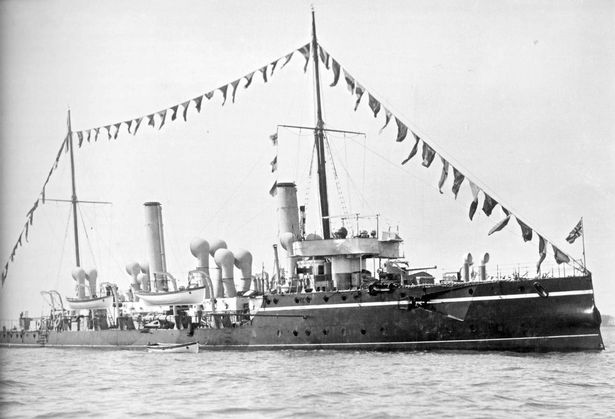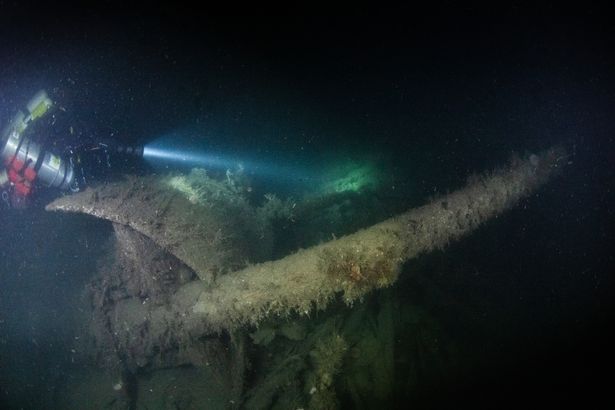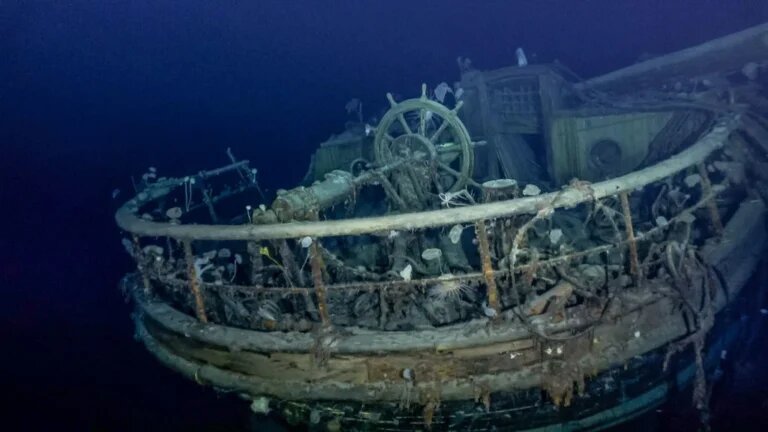Ancient Shipwreck is Discovered 1,200 Years After Sinking in the Holy Land
Sunken remains from a Royal Navy warship have been seen for the first time in over a century after divers located the wreck from World War One.
Back in April 1917, HMS Jason struck a German mine off the Scottish island of Coll and as a result, it sank and killed 25 men.
The exact location of the wreck was listed for decades on nautical charts, until 2011 when a seabed survey found no trace of her where she was supposed to be, meaning it was struck from the records.
Now, after five years of research, the remains have been found. Project leader Kevin Heath said: “It’s been known about in diving circles and shipwreck circles in Scotland for a long time.

“It was one of those mysteries – it was out there, people had looked and couldn’t find it, so I thought I’d take it upon myself to have a look.”
He used a side scan sonar to search the seabed when a possible wreck was revealed 600 meters from where Jason was supposed to be lying next to a large rock.
Later on her identity was confirmed on April 12 by a SULA Diving crew, sailing aboard MV Clasina.
Lieutenant Jen Smith of the Royal Navy, who was part of the dive team, said it was an “incredibly moving” discovery. “There was excitement at finding the wreck, but that’s quickly tempered by the fact that it’s a war grave – 25 men died here,” she said.

“It’s incredibly moving to think that no one has seen the ship since her stern disappeared 105 years ago. “Families knew the fate of the ship, but now they will know where she is and that can bring closure.”
Now the wreck lies at a depth of 93m and has several identifying features, including a pointed stern, a distinctive propeller, two 4.7in guns and crockery.
There is also evidence of the fateful moment that doomed the ship. “It’s been there since World War One so it’s very broken down,” said Mr. Heath.

“But it’s upright, with a slight list to port, the aft gun is there, then all of the machinery is exposed, then there’s the bridge, then there’s a forward gun.
“And just at the forward gun there is a break where the wreckage is missing and that’s where she hit the mine.”
Steps will now be taken to ensure the Jason is protected under law as an official war grave, allowing divers to visit but not touch the wreck.
Lt Smith said: “Documenting the ship, showing people what she’s like today is important to me. Naval war graves are often forgotten, as it’s hard for people to remember what you can’t see.
“Whilst land battlefields and cemeteries such as those in Normandy or the Somme can be visited by anyone, only a few of us can visit a shipwreck.
“So the more we can show and explain what happened to her and her sailors, the better. It’s important to make sure those who served are not forgotten.”

HMS Jason was built as a torpedo gunboat in 1892 but was later converted into a minesweeper by 1909, continuing her duties throughout the First World War.
Sadly she sank in little more than five minutes – enough time for nearly 80 survivors to escape, before being rescued by HMS Circe.
Steve Mortimer, who led the dive group, said: “It was a privilege to help identify the remains of this vessel. “25 families can now take comfort that the location of their relative’s ship is precisely known. We think that’s important.”
Mr. Heath and his fellow historian Wendy Sadler have documented the story of the Jason and its crew at lostinwatersdeep.co.uk
